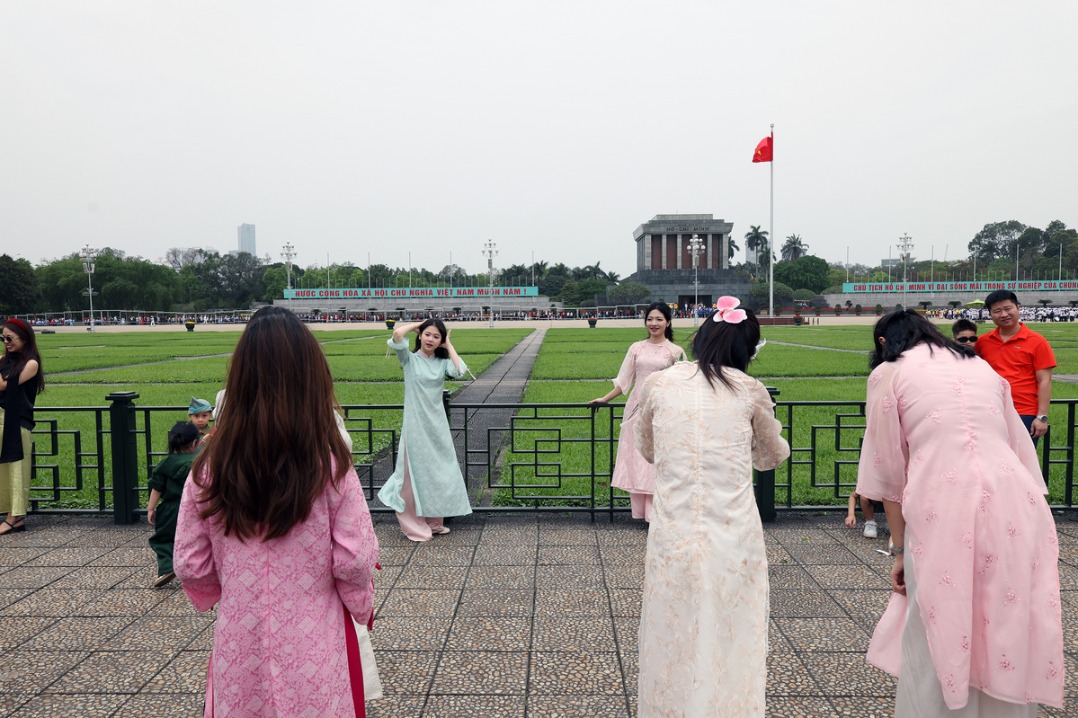Dedicated efforts bolster nation's health defenses
Measures taken during pandemic safeguard public, prepare for future outbreaks

Reporting systems
The pandemic prompted disease control authorities and experts to decide on the key capabilities needed to tackle such an outbreak or other acute health emergency.
Building a regular surveillance and early warning system for pathogens, as well as implementing triaged treatment systems during outbreaks have been emphasized repeatedly, and the results of immediate efforts have already been used to cope with threats of infection.
Wang, head of the national disease control administration, said China has built the world's largest online reporting systems for contagious diseases, reducing the time it takes to report a new outbreak from five days to four hours.
A nationwide network of facilities capable of testing for contagious diseases and pathogens has also been established. Within 72 hours, more than 300 types of pathogens can be rapidly identified, and all provincial-level CDC centers and 90 percent of such centers at the municipal level can perform nucleic acid tests and isolate viruses, he added.
Zhang Guoxin, an official at the administration, said 84,000 medical institutions nationwide have been linked to the direct reporting system.
"We are carrying out regular surveillance of key infectious diseases such as plague, polio, malaria and influenza. For COVID-19 and other acute respiratory illnesses, we have established a 10-pronged surveillance system that integrates monitoring of hospital visits, variants and urban wastewater," he said.
Work on a pilot surveillance program dedicated to acute respiratory illnesses is also in progress, he added.
In June, the number of monkeypox cases in China began to rise due to stealth transmission of the viral disease among high-risk groups, and a rising number of imported cases.
Shi Guoqing, a researcher at the China CDC's emergency center, said that to enable swift detection of new cases, the nation has established a multichannel monitoring and early warning system for monkeypox, and carried out tests among inbound passengers suspected of contracting the virus.
"HIV clinics at hospitals and dermatology and sexually transmitted disease departments are also required to inquire about the epidemiological history of visitors with monkeypox-like symptoms," he said. "We have also strengthened education among key groups — men who have sex with men — and asked them to seek treatment promptly upon exhibiting suspicious symptoms."
Meanwhile, the number of medical facilities considered essential in tackling epidemics has increased.
Zhuang Ning, an official at the National Health Commission's Department of Healthcare Reform, said 98 percent of grassroots medical institutions and hospitals have set up their own fever clinics, while more intensive care unit beds and equipment have been provided at major hospitals.
Since October, China has witnessed a surge in patients at major hospitals, driven by the circulation of various pathogens, including COVID-19, mycoplasma pneumoniae, and influenza.
Mi Feng, spokesman for the commission, said lower-level hospitals, traditional Chinese medicine and primary health institutions have been mobilized to relieve pressure on large hospitals during the peak of respiratory illnesses.
"Fever clinics and fever rooms at grassroots level have handled 44 percent of visits at all fever departments across the nation, effectively meeting patients' demands," he said during a news conference last month.
"Given the complicated situation this winter, with multiple pathogens circulating simultaneously, we have attached greater significance to coordinating resources across different regions and hospitals, and added treatment areas and personnel to improve services."
Gao Xiang, president of the ECO-City Hospital of Tianjin Fifth Central Hospital, said that during the peak in patient visits, the hospital coordinated resources between emergency care, fever and respiratory clinics and used real-time data monitoring to allocate patients and maintain services in an orderly manner.
Zhuang, the health official, said the commission is also drafting diagnosis and treatment plans for contagious diseases such as plague, cholera and anthrax in an attempt to enhance the knowledge and skills of medical workers and promote standardized treatment of infectious disease patients nationwide.
New requirements
The guideline released last month has resulted in new requirements for disease control development in China, including enhancing the scientific prowess of relevant institutions and cultivating high-quality public health professionals.
It states that central- and provincial-level CDC centers should also develop functions as preventive medicine academies.
Zhang, the administration official, said: "Reflecting on the domestic battle against COVID-19, science and technological research have played a significant role in isolating and decoding the genome sequences of the virus, developing vaccines, testing kits and therapeutics. Big data and artificial intelligence tools have also been widely used in epidemiological investigations."
The new requirements are expected to concentrate resources and personnel to resolve problems in disease control and ease channels for converting research results into real-world applications, he said.
Wang, the administration head, said a task force dedicated to cultivating talent was recently set up within the administration, to improve the quality of public health colleges and introduce programs to support the nurturing of high-level talent.
The guideline also states that when assessing the performance of public health workers, less attention should be paid to the number of papers they have published, and more emphasis attached to the outcomes of their disease control work.
























